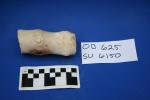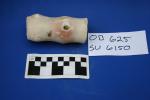
Descrizione
- 625
- Hercules club, fragment
- late 2nd-3rd c. AD
- Densely grained white marble (Italian) with no streaking polished to a `soapy' surface; iron (pin).
- Ht/1. 10.3 cm, 4.2 cm diam. on upper end, 3.7 cm in diameter on lower end. Large pin ca 6 mm wide, 4 mm thick.
- Broken cleanly above; the stroke that removed the lower club, leaving a rougher break-plane, took with it a pressure-flake from the fragment’s side. Rust stains blotch the marble between the holes of the embedded iron pin, on the left hand side. There is slight staining around the other embedded pin fragment, outlined now in dark corrosion; corrosion product rings the major pin around its plain drilled entry point, from which a pressure flake broke away before the rusting was complete. Small white chips and scars and scratches on the otherwise very clean surface were inflicted at post-antique moments up through present excavation.
- " Shaft of a Hercules’ club: the typical knotty branch is here a quite thin cudgel, marked emphatically by profuse ‘eyes’ in high relief denoting the trimming of a stout branch. The fragment is still pierced by a sturdy iron pin which was set into a hole, meant to be concealed within relief elements and with plaster. rnThe pin ran into one teardrop-shaped knot and out the other side. The pin is not a sign of a repair, but original to the statuary. The tip is still partly hidden by plaster accretions within the sunken recess of the carved-out teardrop; at the other end the finished or broken tip is nested in a dense corrosion product filling the circular drilled hole. The stump of a much tinier pin is still embedded below the teardrop that it pierced, a little to the left; it may be a repair rather than an original design element. Both pins are orthogonal in section like nail shafts.
- The fragment belonged to a statuary group, with multiple extending marble sections, some quite slim and requiring internal bracing for stable durability In this group, Hercules waged a club, attacking (whether animal or with human body, probably one of the canonical Labors), as in the large fragment, S6, of Hercules assaulting Hippolyta. The pin could have pinned the club to a landscape element, the hero’s head, or else a leg,.nIt is not clear whether or not this club belonged to the Amazon group S 6, or even to a group made in the same workshop and decorative campaign. As S 6 seems to be 3rd-c. in date; it is of interest that the modelling of the eyes of the club can be roughly dated to the very late Antonine or early 3rd-c. period. Club-eyes in the high Antonine period and in the first half of the 3rd c. were typically differently modelled Our fragment’s knots have a smooth flat upper surface with incised detail only. These earlier works’ knots show a very swollen, plastically modeled upstanding scar-rim; deeply cut away from within using a drill, the end of the trimmed shoot is a fat rounded button strongly projecting from a sunken inner face. These features can be seen on the club held by the Commodus-Hercules from the area of the Horti Lamiani at Rome. Analogies for S 7’s rendering of the club-eyes on clubs or even tree trunks are rare. One comes from the Labors of Hercules at the Gallo-Roman villa at Chiragan, which have been variously dated between ca AD 200 and the 4th c. AD; a 3rd-4th c. date is most likely. Another match is given by a late 2nd-3rd-c. Italian portrait statuette of a boy as Hercules in the Capitoline Museum. Our club S 7 seems best dated in the last years of the 2nd c. into the first decades of the post-Antonine period, therefore; if it belongs to the same décor as S 6, it assists the 3rd-c. date assigned here to S 6.
- For the Chiragan Hercules series, bibliography Stirling 2005 57; Bergmann 1995 passim, and Bergmann 1999, 32-41, pl. 1-4, 3.1. The Hercules-child portrait, Stuart Jones 1912, cat. 51 pl. 38, and Arachne Object 80211. For the Commodus-Hercules, from the imperial Horti Lamiani at Rome. Kleiner 1992, 275-77 fig. 243.












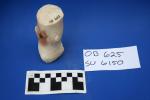
![Download [view]](/villamagna/ark//skins/villamagna/images/results/download_sml.png)
